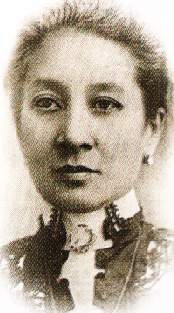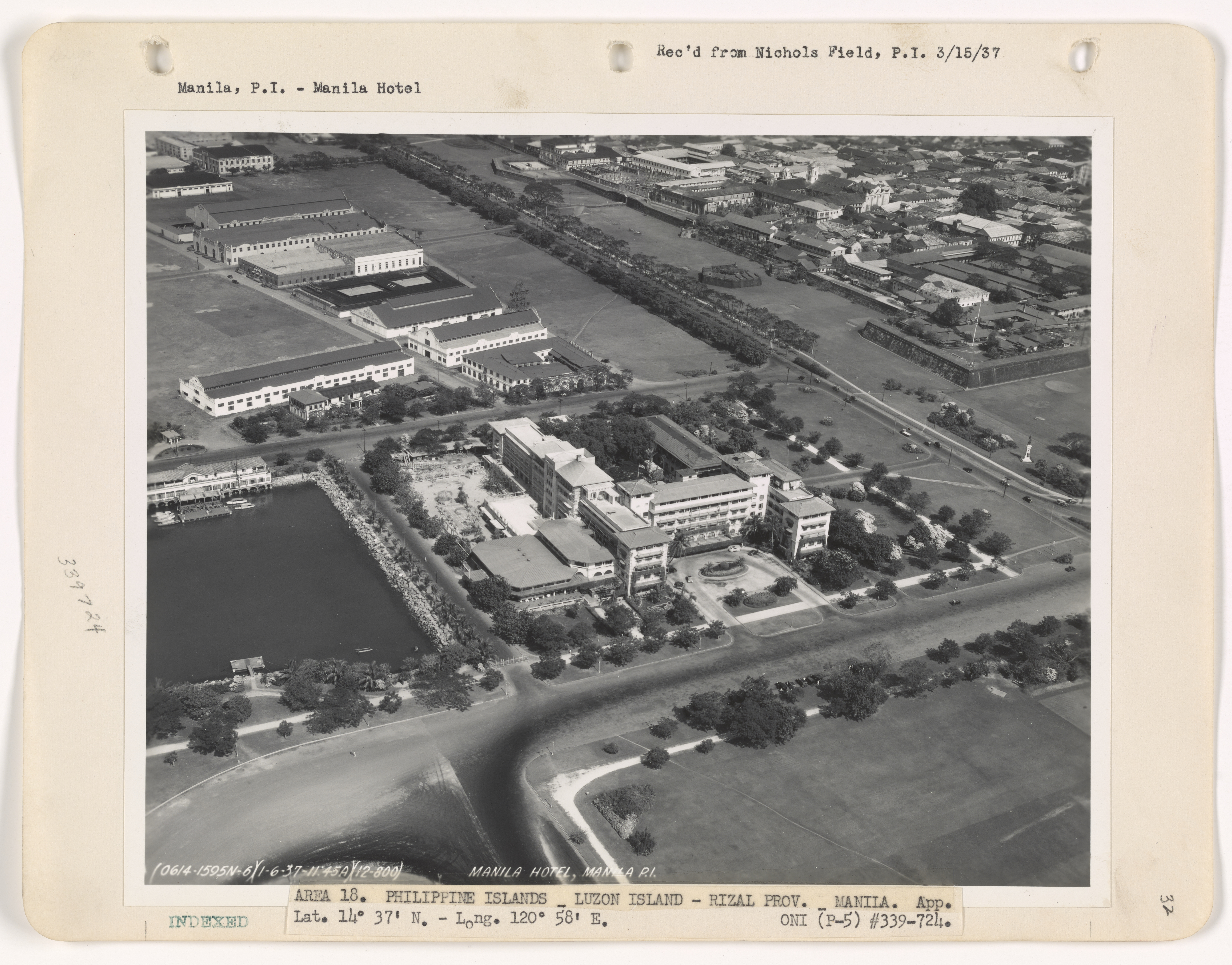|
Ramón Diokno
Ramón Diokno y Marasigan (March 28, 1886 – April 21, 1954) was a Filipino statesman, jurist, Associate Justice, and one of the foremost nationalists of his generation. He fought the American Parity Rights Amendment and was one of four senators to be ousted so that the amendment may be ratified. He later became Associate Justice under Ramon Magsaysay but had the shortest term when he died two months and eleven days later. Diokno is known as the very first Government Corporate Counsel (Office of the GCC) in history from 1935 to December 1941 when the war began. Justice Diokno is famous for writing the ponencia in the Resolution for the In Re: Albino Cunanan, et al. Early life and education Diokno was born in Taal, Batangas on March 28, 1886, as the only son to Ananías Diokno, head of the Visayan forces during the Philippine Revolution and Philippine–American War, and Paulina Marasigan. Diokno had four half-siblings from his father's second wife Emilia Rivera. Diokno's ... [...More Info...] [...Related Items...] OR: [Wikipedia] [Google] [Baidu] |
Diokno
Diokno is a Tagalog language, Filipino surname that originated from Taal, Batangas. It was changed to a more Filipino surname from the original Hispanized surname, Diocno. Diokno#Diokno, Ángel Diokno (born c. 1830) is the oldest known patriarch of the immediate family of Ananías Diokno, Gen. Ananías Diokno (son of Ángel). Although the Diokno family members are primarily prevalent in the Philippines, there are significant numbers of people with this surname in the United States, Saudi Arabia, and other countries. Through marriages the Diokno clan is also interrelated with multiple historical figures, such as public servants Francis Garchitorena, Justice Francis Garchitorena, Corazon Aquino (sixth cousin twice removed of Jose W. Diokno through the Sumulong clan), and Governor-General Félix Berenguer de Marquina, Félix Berenguer de Marquina y Fitzgerald, who is the namesake of Marikina. Family of Ananías Diokno Because of the Irish ancestry of Berenguer de Marquina coming f ... [...More Info...] [...Related Items...] OR: [Wikipedia] [Google] [Baidu] |
Jose W
Jose is the English transliteration of the Hebrew and Aramaic name ''Yose'', which is etymologically linked to ''Yosef'' or Joseph. Given name Mishnaic and Talmudic periods * Jose ben Abin * Jose ben Akabya *Jose the Galilean * Jose ben Halafta * Jose ben Jochanan * Jose ben Joezer of Zeredah * Jose ben Saul Male * Jose (actor), Indian actor * Jose Balagtas, Filipino film director *Jose Baxter (born 1992), English footballer *Jose Davis (born 1978), American football player * Jose Glover (died 1638), English minister and pioneer of the printing press in the New World * Jose Kattukkaran (born 1950), Indian politician *Jose Kurushinkal, Indian cricket umpire *Jose Kusugak (1950–2011), Inuk politician *Jose Lambert (born 1941), Belgian professor * Jose K. Mani (born 1965), Indian politician *Jose Mugrabi (born 1939), Israeli businessman *Jose Nandhikkara (born 1964), Indian author *Jose Pellissery (1950–2004), Indian film actor *Jose Chacko Periappuram (born 1958), Indian surg ... [...More Info...] [...Related Items...] OR: [Wikipedia] [Google] [Baidu] |
Manila Hotel
The Manila Hotel is a 550-room, historic five-star hotel located along Manila Bay in Manila, Philippines."Manila Hotel" Arkitektura.ph. Retrieved on September 27, 2013. The hotel is the oldest premiere hotel in the Philippines built in 1909 to rival Malacañang Palace, the official residence of the President of the Philippines. It was opened on the commemoration of American Independence on July 4, 1912. The hotel complex was built on a Land reclamation, reclaimed area of at the northwestern end of Rizal Park along Bonifacio Drive in Ermita. Its penthouse served as the residence of Douglas MacArthur, General Douglas MacArthur during his tenure as the Military Advisor of the Philippine Commonwealth from 1935 to 1941. The hotel used to hos ... [...More Info...] [...Related Items...] OR: [Wikipedia] [Google] [Baidu] |
Philippine National Railways
The Philippine National Railways (PNR) (; ) is a government-owned and controlled corporation, state-owned railway company in the Philippines which operates one commuter rail service between Laguna (province), Laguna and Quezon, and local services between Sipocot, Camarines Sur, Sipocot, Naga, Camarines Sur, Naga and Legazpi, Albay, Legazpi in the Bicol Region. It is an attached agency of the Department of Transportation (Philippines), Department of Transportation. Philippine National Railways traces its roots to the Ferrocarril de Manila-Dagupan, founded on November 24, 1892 during the History of the Philippines (1521–1898), Spanish colonial period, and later becoming the Manila Railroad Company (MRR) during the History of the Philippines (1898–1946), American colonial period. Founded on June 20, 1964, by virtue of Republic Act No. 4156, the PNR used to operate over of route from La Union to the Bicol Region. However, neglect reduced the railway's service, and persistent p ... [...More Info...] [...Related Items...] OR: [Wikipedia] [Google] [Baidu] |
Philippine National Bank
The Philippine National Bank (PNB, ; ; Hokkien in the Philippines, Hokkien ) is a major Filipino bank based in Pasay in the Philippines. It was established by the Philippine government on July 22, 1916, during the Insular Government, American Era. The bank became the first universal bank in the Philippines in 1980 and was acquired by tycoon Lucio Tan after it was privatized by the government in 1989. After its merger with the Tan-owned Allied Banking Corporation, Allied Bank on February 9, 2013, PNB became the fifth largest private domestic bank in the country. , PNB was the seventh largest banks in the Philippines by assets. It has 713 domestic branches and more than 1,400 ATMs. PNB has more than 70 overseas branches, representative offices, remittance centers and subsidiaries across Asia, Europe, the Middle East, and North America. History Early years The Philippine National Bank was established as a government-owned banking institution on July 22, 1916. Its primary ma ... [...More Info...] [...Related Items...] OR: [Wikipedia] [Google] [Baidu] |
Ignacio Villamor
Ignacio Villamor y Borbón (February 1, 1863 – May 23, 1933) was a Filipino lawyer, Associate Justice of Supreme Court from Abra, Philippines and the first Filipino president of the University of the Philippines. Justice Villamor is also the father of the World War II Filipino aviation hero, and 6th Pursuit Squadron Commander, Capt. Jesús A. Villamor of the Philippine Army Air Corps. Early life Villamor was born in Bangued, Abra on February 1, 1863 to parents Florencio Villamor y García and Wenceslawa Borbón. His father died when he was young. Wanting to be a priest, he attended at the Seminario Conciliar of Vigan, Ilocos Sur but did not push through with the vocation. In 1882, he studied at the San Juan de Letran in Manila and acquired a bachelor's and master's degrees. At the University of Santo Tomas, he acquired his law degree in March 1893 while completing two-year work on literature and philosophy at the same time. Married to Mariquita Flores, he was the father o ... [...More Info...] [...Related Items...] OR: [Wikipedia] [Google] [Baidu] |
Felipe Buencamino
Felipe Buencamino y Siojo (August 23, 1848 – February 6, 1929) was a Filipino lawyer, diplomat, and politician. He fought alongside the Spaniards in the Philippine Revolution but later switched sides and joined Emilio Aguinaldo's revolutionary cabinet. He was a member of the Malolos Congress and co-authored the Malolos Constitution. He was also appointed as Secretary of Foreign Relations in the cabinet of Aguinaldo. After he left the revolutionary government, he co-founded the Federalista Party and became a founding member of the Philippine Independent Church. Early life He was born in San Miguel, Bulacan to Victor Buencamino and Petrona Siojo. Before the Hispanization of the Philippine natives, his surname was Mangalindan (a contraction of ''Magaling na daan'' or good road). Felipe studied at the University of Santo Tomas, where he obtained his A.B. degree with honors. He was one of Father José Burgos' students alongside Paciano Rizal, José Rizal's older brother. He ... [...More Info...] [...Related Items...] OR: [Wikipedia] [Google] [Baidu] |
Manila
Manila, officially the City of Manila, is the Capital of the Philippines, capital and second-most populous city of the Philippines after Quezon City, with a population of 1,846,513 people in 2020. Located on the eastern shore of Manila Bay on the island of Luzon, it is classified as a Cities of the Philippines#Independent cities, highly urbanized city. With , Manila is one of the world's List of cities proper by population density, most densely populated cities proper. Manila was the first chartered city in the country, designated bPhilippine Commission Act No. 183on July 31, 1901. It became autonomous with the passage of Republic Act No. 409, "The Revised Charter of the City of Manila", on June 18, 1949. Manila is considered to be part of the world's original set of global cities because its commercial networks were the first to extend across the Pacific Ocean and connect Asia with the Hispanic America, Spanish Americas through the Manila galleon, galleon trade. This marked t ... [...More Info...] [...Related Items...] OR: [Wikipedia] [Google] [Baidu] |
Marikina City
Marikina (), officially the City of Marikina (), is a Cities of the Philippines#Legal classification, highly urbanized city in the Metro Manila, National Capital Region of the Philippines. According to the 2020 census, it has a population of 456,159 people. Located along the eastern border of Metro Manila, Marikina is the main gateway of Metro Manila to Rizal (province), Rizal and Quezon (province), Quezon provinces through Marikina–Infanta Highway. It is bordered on the west by Quezon City, to the south by Pasig and Cainta, Rizal, Cainta, to the north by San Mateo, Rizal, San Mateo, and to the east by Antipolo, the capital of Rizal (province), Rizal province. It was founded by the Society of Jesus, Jesuits on the fertile Marikina Valley in 1630 and the area was called Jesus dela Peña (Jesus of the Rocks) and later on called Mariquina. Marikina was the provincial capital of the Manila (province), Province of Manila under the First Philippine Republic from 1898 to 1899 durin ... [...More Info...] [...Related Items...] OR: [Wikipedia] [Google] [Baidu] |
Felix Berenguer De Marquina
Felix may refer to: * Felix (name), people and fictional characters with the name Places * Arabia Felix is the ancient Latin name of Yemen * Felix, Spain, a municipality of the province Almería, in the autonomous community of Andalusia, Spain * St. Felix, Prince Edward Island, a rural community in Prince County, Prince Edward Island, Canada. * Felix, Ontario, an unincorporated place and railway point in Northeastern Ontario, Canada * St. Felix, South Tyrol, a village in South Tyrol, in northern Italy. * Felix, California, an unincorporated community in Calaveras County * Felix Township, Grundy County, Illinois * Felix Township, Grundy County, Iowa Music * Felix (band), a British band * Felix (musician), British DJ * Felix (rapper) (born 2000), Australian rapper and member of the K-pop boy band Stray Kids * Félix Award, a Quebec music award named after Félix Leclerc Business * Felix (pet food), a brand of cat food sold in most European countries * AB Fe ... [...More Info...] [...Related Items...] OR: [Wikipedia] [Google] [Baidu] |
Philippine–American War
The Philippine–American War, known alternatively as the Philippine Insurrection, Filipino–American War, or Tagalog Insurgency, emerged following the conclusion of the Spanish–American War in December 1898 when the United States annexed the Philippine Islands under the Treaty of Paris (1898), Treaty of Paris. Philippine nationalists constituted the First Philippine Republic in January 1899, seven months after signing the Philippine Declaration of Independence. The United States did not recognize either event as legitimate, and tensions escalated until fighting commenced on February 4, 1899, in the Battle of Manila (1899), Battle of Manila. Shortly after being denied a request for an armistice, the Philippine Council of Government issued a proclamation on June 2, 1899, urging the people to continue the war. Philippine forces initially attempted to engage U.S. forces conventionally but transitioned to guerrilla tactics by November 1899. Philippine President Emilio Aguinaldo w ... [...More Info...] [...Related Items...] OR: [Wikipedia] [Google] [Baidu] |





